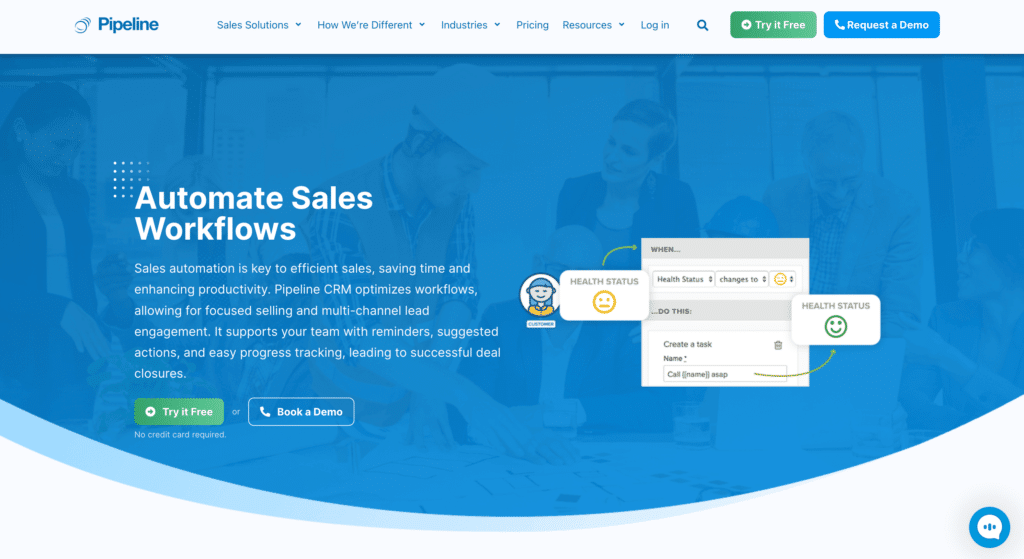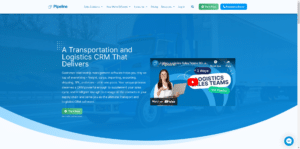With around 60% of customers are now predicted to have a higher standard of satisfactory customer experience, transportation and logistics companies must up their game in offering excellent customer service. And if you’re still using spreadsheets to handle your sales operations, this will be a tough challenge.
The role of CRM software for transportation and logistics businesses is immense. It records all customer information and communication, allowing your sales team to act fast on customer inquiries and collaborate efficiently with other teams to ensure timely and accurate shipments.
And that is only a small benefit of adopting CRM software for your transportation and logistics business. Below, you will find more in-depth advantages ranging from improved lead management to increased productivity.
4 Major Benefits of Using Transportation and Logistics CRM Software
1. Improved Lead Visibility and Streamlined Communication
The clearer the visibility across your company, the easier to communicate. And that’s difficult to do without a centralized hub that unifies all communication channels, data sharing, and business metrics.
In such diverse and multi-channel industries as transportation and logistics, it’s imperative that you can see all the moving parts of your sales pipelines. A transportation and logistics CRM creates a sense of transparency within departments, such as between the sales, account managers, and supply chain.
As a result, internal miscommunication is reduced, everyone knows what their tasks are, and which deals/projects need extra attention—all help to increase the chance of meeting the sales goals.
2. Increased Productivity Equals Scalability
With transparency and excellent cross-team communication, your team will be more productive in closing deals. And when this happens, the quality of your services will speak for itself.
Your current customers will stick with you for a long time and acquiring new customers won’t be a problem.
Related: Leverage these ready-to-use sales introduction email templates to attract new leads without the headache.
3. CRM Automates Tedious Tasks
Another reason why transportation and logistics companies need a CRM is that it frees up your time. Administrative tasks, such as creating repetitive orders and payment confirmations, can be time-consuming but are necessary to ensure everything is recorded correctly. Let CRM automate those tasks for you and give you more time to focus on building meaningful relationships.

Did you know that Pipeline CRM will instantly create a new deal when a recurring deal is closed? Learn more about our smart automation workflow here.
4. CRM Improves On-Time Shipments
When you have all the data in one place and is shared across departments, you can better manage the shipping schedule. You’ll easily know the operating time of warehouses, the left capacity of your fleets, and which shipments are top priority and which are delayed. This will ensure you have a smooth-running business.
Grow Your Transportation and Logistics Company with a CRM
It is estimated that for every dollar spent on CRM adoption, you’ll get more than $30.48 back. And from the explained advantages above on why transportation and logistics companies need a CRM, we can easily say that you’ll reap more for your business than your investment in a CRM solution.
Create well-oiled transportation and logistics operations with Pipeline CRM—a simple yet powerful CRM that allows you to track all your team tasks, deals, shipments, and more from your dashboard, regardless of where you are. Our mobile app enables you to connect your in-office and on-the-road workers seamlessly—allowing everyone to get the latest updates on projects. Check other Pipeline CRM’s top features to learn more.
FAQs - Why Transportation and Logistics Companies Need CRM Software
1. What Is a CRM in Transportation?
A CRM (customer relationship management) in transportation and logistics enhances your business operations by streamlining communication and data sharing between your sales team and leads and between the departments. As a result, you’ll accelerate the deal closing rates, improve shipment/delivery performance, and gain more happy customers.
2. How Can a CRM Help Transportation and Logistics Companies?
Here are some examples of how CRM software can help transportation and logistics companies:
- Contact management: easily add, edit, and group leads for effective sales outreach campaigns.
- Customizable deal stages: tailor your sales processes to match your sales pipeline workflow.
- Lead tracking: set up automated follow-up emails or reminders to ensure no leads slip through the cracks.
- Clean data: configure specific rules in inputting contact and sales data to keep your CRM data accurate and updated.
3. What Is the Best CRM for Transportation and Logistics Companies?
Pipeline is one of the best CRMs for transportation and logistics companies, especially for those looking to streamline and automate their sales workflows. You can set up automation on repeat orders and email campaigns, easily map and record bids’ progress, and generate accurate sales forecasting. Furthermore, compared to other CRM tools, we offer an affordable plan starting at $25 per user per month.
4. How Do I Choose the Right Transportation and Logistics CRM?
Here are a few features you should look for when choosing a transportation and logistics CRM:
- Customizable workflows and data points
- Advanced features on sales management, reporting, and forecasting
- Support automation, especially for doing administrative and repetitive tasks
- Vast integrations with tools you already use
- User-friendly navigation system with a quick setup process
- Scalable CRM that can grow with you without breaking the bank




